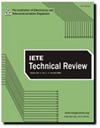Novel Double Tied Cross Link with Reduced Cross Cables for Maximum Power Extraction under Uniform and Non-Uniform Shading Conditions
IF 1.8
4区 计算机科学
Q2 ENGINEERING, ELECTRICAL & ELECTRONIC
引用次数: 2
Abstract
Partially shaded panels lead to the creation of troughs in the power generation PV curve, from its optimal potential. Researchers have focally went through for findings in the optimal Photo Voltaic (PV) configuration namely Series (S), Parallel (P), Series–Parallel (SP), Bridge Link (BL), Honey Comb (HC), Total Cross Tie (TCT), Triple Tied Cross Link (TTCL), and Hybrid Configurations. In this paper, a Novel Double Tied Cross Link (DTCL)-based PV panel configuration is proposed. The superiority of the proposed DTCL configuration is that the number of local maximum power points (LMPP) is reduced in certain partial shaded conditions and optimized cost also possible, as the number of cross-links has been reduced, compared to conventional configurations. The maximum power generation superiority of TCT and TTCL has been realized with the proposed novel configuration of Double Tied Cross Link. Using MATLAB/Simulink, different patterns of possible shadings have been created as a replica of real-time partial shadings. Analysis of the proposed DTCL configuration has been implemented along with the conventional configurations in MATLAB simulation. The technical parameters, such as open circuit voltage, short circuit current, maximum voltage, maximum current, fill factor, mismatch losses, and efficiency, are considered for analyzing the proposed DTCL photo voltaic configuration. Besides, this article also presents a novel DTCL PV configuration which reveals cross-cable savings, maximum power attainment, and economically feasible, as usage of cross cables is less, without much compromising on power generation.在均匀和非均匀遮阳条件下,新颖的双系交联与减少交叉电缆的最大功率提取
本文章由计算机程序翻译,如有差异,请以英文原文为准。
求助全文
约1分钟内获得全文
求助全文
来源期刊

IETE Technical Review
工程技术-电信学
CiteScore
5.70
自引率
4.20%
发文量
48
审稿时长
9 months
期刊介绍:
IETE Technical Review is a world leading journal which publishes state-of-the-art review papers and in-depth tutorial papers on current and futuristic technologies in the area of electronics and telecommunications engineering. We also publish original research papers which demonstrate significant advances.
 求助内容:
求助内容: 应助结果提醒方式:
应助结果提醒方式:


